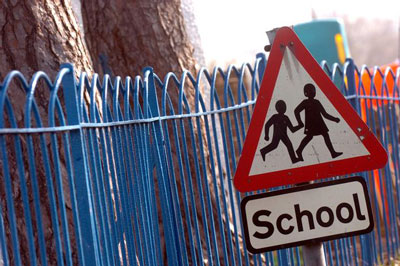How NOT to select a good school
Posted by Admin on January 21, 2016
By Sandy Hooda
Co-Founder, Vega Schools
 |
Recently, I participated in a panel discussion in Gurgaon on how to select a good school. The dialogue focused on distance, classrooms, building quality, sports infrastructure, teacher qualification, list of toppers and so on. This wasn't surprising, since these concerns are also reflected in the advertisements and literature of most schools.
Our discussion made me reflect on my three-year journey of discovering the greatest schools in the world, and I started analyzing each of these myths.
First: While distance is a factor in selecting a school, should it be a major factor? Consider if you would select an average school next to your home over an extraordinary school several miles away.
Second: Are gleaming classrooms and buildings enough?
During the past decade, there has been extraordinary research on how classrooms create a barrier to learning (Blueprint For Tomorrow, Harvard University Press). Classrooms were necessary when schools were meant to educate the factory workers. Factory workers were required to receive standardized instructions to carry out standardized tasks inside factories. Such instructions required all students to learn the same thing in the same way and at the same pace. This is simply not the case today. We live in the knowledge era where each child’s learning requires personalization. Children need to work individually and in groups.
As children have different ways of learning and even learn at different speeds. Learning needs to be meaningful and feel relevant to the child. These are things that are impossible to achieve when schools have only traditional classroom settings.
Third: Is it only extensive infrastructure, which leads to the making of great sportspersons?
The fact is that many great sportspersons emerge from difficult conditions where infrastructure is poor. This is not to say infrastructure is not important. The overarching question is what were the conditions that created these great sportspersons? Are schools able to create these conditions? Do they develop a child’s lifelong love for sports? Do they consistently build mental toughness through sports? How are schools imbuing lifelong habits of sports, fitness, biomechanics, and nutrition in their students?
Statistically, very few adults continue to play the sports they played in schools. So what goes wrong? I have seen acres of empty sports fields, and yes, even empty horse-riding fields. I’ve often wondered how our money could be better utilized. A good school needs to convince me they have the expertise to create these wonderful lifelong habits in my child.
Finally, is teacher qualification a good enough parameter? Would we entrust our children to qualified teachers who don't love children, who cannot work collaboratively, or have a true passion for learning? Or, should we try to understand how the teachers were appointed and who trains them? Could the teacher induction process and track record of trainers be the critical missing pieces?
Should a school be assessed only by its list of outliers: toppers, sportspersons and celebrities, or should it be assessed by how it delivers learning and impact to all its students? How high is their average? What does a school do for the majority of its children? And how well do schools prepare children for a complex life and career in a global world?
The question is how do we assess a good school?
The greatest schools in the world create a different kind of magic. Walking into these schools, I saw extraordinary student work all around. Student work answers all questions on ability and talent – and it applies equally for both teachers and students. I saw no classrooms, instead multiple and variable zones where students were working on projects.
They were creating, innovating, problem solving, and working in teams.
It reminded me of how we work in the real world. Learning spaces were designed as reconfigurable spaces that personalized learning for each child. I saw children fully engaged in their work and completely immersed in their projects. Children told me they didn't like leaving school, in fact some preferred school to vacation. Exam scores were great too, sparked by their love of learning. Teachers were inducted through an exhaustive process and trained on continuous basis. Parents, community and professionals were welcome to participate. The schools were open to being assessed! Scores of educators and policy makers were visiting from around the world, everyone was welcome, and yet nobody was getting disturbed.
That's when I understood that schools become truly great when they themselves become learners, when they become transparent and allow the real world to assess them. When divisions between the home, the school, and the real world diminish, the greatest schools are born!
(The author is a first generation entrepreneur and the co-founder of Vega Schools. These views are personal.)








